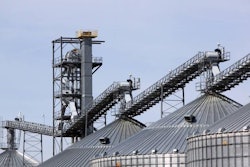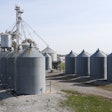
Chicken meat is becoming more and more popular in the world.
“There are no religious constraints, it is very affordable and very flexible for innovation,” said Aidan Connolly, chief innovation officer of Alltech.
Egg business also continues to grow. However, within poultry, chicken production grows more than eggs.
“Egg production continues to grow solidly in line with the rest of the business, but chicken meat just grows faster,” said Connolly. In fact, chicken is displacing meats such as pork and it is getting the largest proportion of the amount of animal protein growth.
Feed production in the world
The Alltech Global Feed Survey has not been an easy task.
“The database initially was not good, because by nature, it is very difficult to obtain those numbers,” Connolly said. “But, after five years, the data has become more robust and confident.”
And no wonder – Alltech has 600 sales people visiting feed mills in 130 countries.
Here are the major numbers:
- World feed production is estimated at almost 1 billion metric tons (995.6 million MT)
- Value of the world feed production is US$450 billion, with an average of US$450 per MT
- Poultry feed accounts for 47 percent of feed production
- Over the past five years, poultry feed has shown to be the fastest growing sector
Poultry feed in Latin America
Brazil and Mexico are the fastest growing poultry countries, therefore, they produce the largest amount of poultry feed. According to the Alltech Global Feed Survey, in terms of feed production, it was Argentina (with an 11 percent growth rate), Bolivia (with 16 percent) and Paraguay (with 25 percent) that were the countries with the largest feed production growth.
Paraguay is growing in all sectors, “because it’s got cheap soybeans and corn, the major drivers of the ability to produce feed,” Connolly said. “In terms of exports, Paraguay has also grown, because of the limitations Argentina has to export ag products,” said Maria Sol Orts, Alltech’s communications manager for Latin America.
Connolly is very positive about Latin America in 2016: “It is going to be very exciting, I think, for Latin America in general. We should see interesting things occurring.”
Chicken in Brazil and eggs in Mexico
In the past three to four years, Brazil has slowed down in terms of poultry production. In this period, the industry was more focused to the domestic market. Additionally, Brazil’s costs have gone up a lot.
“But, it is going to renew. It has a very aggressive promotion for broiler meat and pork outside Brazil,” Connolly said.
“I think this is going to be a fantastic year for Brazil, because of the changes in the exchange rate. It is not going to affect the internal market too much, but it is going to open tremendous opportunities for exports,” he said.
Connolly said there are tremendous opportunities in Mexico, particularly in the egg business.
“With the new animal welfare rules in place in the U.S., we are going to see more eggs produced in Mexico and exported to the U.S.” On the other hand, producers in the U.S. are also looking to invest in Mexico. And because globalization goes both ways, Mexican companies are also investing in the U.S. and looking to invest in countries such as Argentina and others in South America.
Economics of integration
When discussing the trend of a faster growth of commercial feed in Mexico, as compared to integrators feed production, Connolly says that “economics of integration is very interesting, and I think that long-term integration is the model to follow, including feed production.”
There can be market abnormalities due to internal politics, taxation and other factors.
“Sometimes, smaller integrators are taxed differently than larger integrators, and larger integrators are audited more often,” – factors that affect the way businesses are handled in different countries. For example, in Europe, companies are less integrated. Some might not even control the feed mill, buying feed from other companies.
Depending on the economics, it might make sense not to own a feed mill, but “if I would predict the future in Latin America, I would say that integration is the model to go,” Connolly said.
He said there are tremendous opportunities for the poultry industry, and therefore the feed industry, in Brazil and Mexico, as well as the rest of Latin America.


















